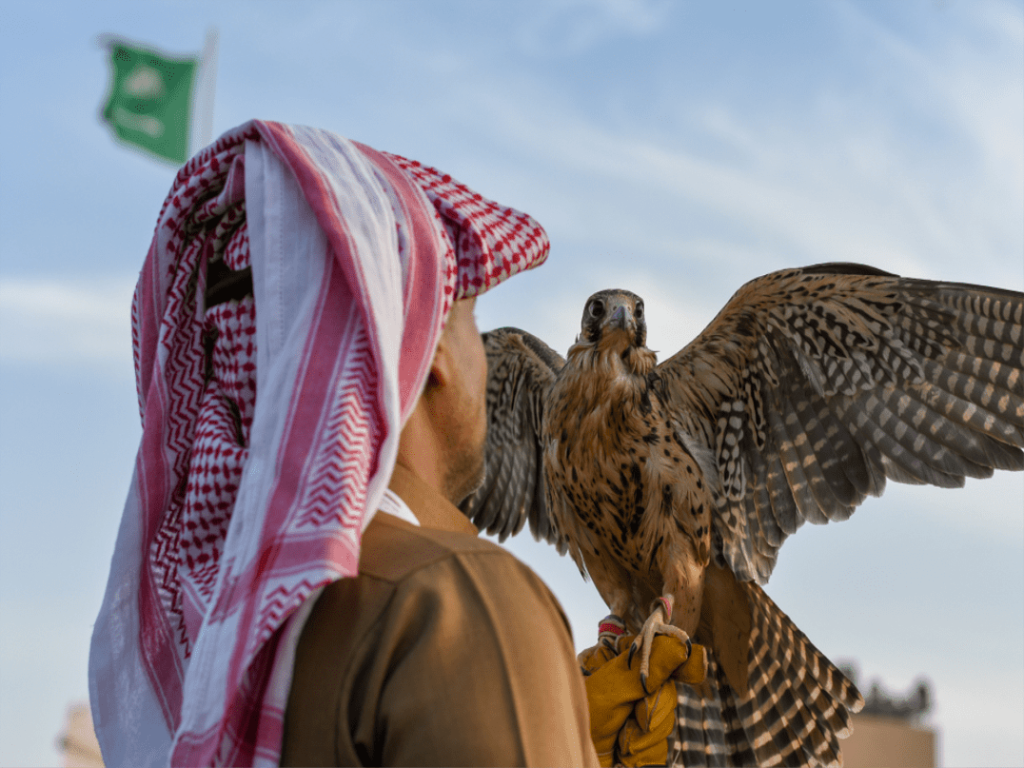Saudi Arabia, a land steeped in history and tradition, offers a captivating blend of ancient customs and modern aspirations. Understanding Saudi Arabia traditional clothing and key Saudi Arabia culture facts provides a valuable window into the heart of this fascinating nation. This article will guide you through the iconic garments of traditional clothing in Saudi Arabia and share intriguing insights into the rich tapestry of Saudi Arabia culture.
Iconic Garments: Saudi Arabia Traditional Clothing
Traditional clothes of Saudi Arabia are not merely functional; they are expressions of identity, religious values, and cultural heritage, adapted to the desert climate.
Men’s Traditional Attire:
- Thobe (ثَوْب): The cornerstone of men’s traditional clothing in Saudi Arabia. It’s a long-sleeved, ankle-length robe typically made of white cotton for everyday wear, offering comfort in the heat. During colder months or for formal occasions, thobes can be made from heavier fabrics and come in various colors like beige, brown, or navy.
- Bisht (بِشْت): A prestigious outer cloak worn over the thobe, especially for formal events, weddings, and by dignitaries. Bishts are often made of fine wool or camel hair and can be intricately embroidered with gold or silver thread.
- Ghutrah (غُتْرَة): A square or rectangular headdress, usually made of cotton, that protects the head and face from the sun, wind, and sand. The most common patterns are plain white or checkered in red and white (shemagh – شَمَاغ) or black and white.
- Iqal (عِقَال): A black cord worn on top of the ghutrah to hold it in place. Its style and thickness can sometimes indicate tribal affiliation or social status.
Women’s Traditional Attire:
- Abaya (عَبَايَة): The customary outer garment for women in Saudi Arabia. It’s a long, loose-fitting cloak that covers the body from shoulders to ankles. While traditionally black, modern abayas come in various colors and designs, often featuring elegant embroidery, beadwork, or lace.
- Niqab (نِقَاب): A veil that covers the face, often worn in addition to the hijab or abaya, leaving only the eyes visible.
- Hijab (حِجَاب): A headscarf worn by many Muslim women, covering the hair and neck. Styles and colors vary widely.
Fascinating Insights: Saudi Arabia Culture Facts
Beyond the attire, Saudi Arabia culture is rich with unique customs and values. Here are some interesting Saudi Arabia culture facts to deepen your understanding:
Core Values and Beliefs
- The Centrality of Islam: Islam is the official religion and deeply influences all aspects of life in Saudi Arabia, from law and social customs to daily routines and celebrations.
- Family Importance: Family ties are incredibly strong, and the extended family plays a significant role in social life and support systems. Respect for elders is paramount.
- Respect for Tradition: While embracing modernization, Saudi society deeply values its traditions and heritage, striving to preserve them in various aspects of life.
- Gender Roles: While Saudi Arabia is undergoing social reforms, traditional gender roles are still prevalent. Public spaces and social interactions may sometimes be gender-segregated.
Hospitality and Social Customs
- Hospitality (ضيافة – Dhiafa): Welcoming guests is a deeply ingrained tradition. Offering coffee (gahwa – قَهْوَة) and dates (tamr – تَمْر) is a common gesture of hospitality and respect.
- Majlis (مَجْلِس): This is a traditional sitting area where guests are received and social gatherings take place. It’s a symbol of hospitality and community.
- Coffee Culture: Arabic coffee is more than just a beverage; it’s a symbol of hospitality and social interaction, prepared and served with specific rituals.
Arts, Language, and Symbols
- Artistic Expressions: Traditional arts like calligraphy, poetry (especially Nabati poetry), and music (often featuring instruments like the oud) hold cultural significance.
- The Importance of Language: Arabic is the official language and holds immense cultural and religious significance. Different dialects exist across the regions.
- National Symbols: The palm tree and crossed swords emblem represents the Kingdom’s heritage and resources. The national colors are green (representing Islam) and white.
Cuisine and Celebrations
- Cuisine: Saudi Arabian cuisine features flavorful dishes often based on rice, meat (especially lamb and chicken), and spices. Traditional bread like khubz is a staple.
- Festivals and Celebrations: Religious holidays like Eid al-Fitr and Eid al-Adha are major celebrations. People engage in special prayers, family gatherings, and eat traditional foods. The Janadriyah National Festival is a significant cultural event showcasing Saudi heritage and arts.
In conclusion
Understanding these Saudi Arabia culture facts alongside the significance of traditional clothing in Saudi Arabia offers a more complete picture of this dynamic country. By appreciating these aspects, learners of Arabic can gain a richer context for their studies and foster deeper connections with the culture.
To further explore the fascinating world of Saudi Arabia’s language and culture, we invite you to visit www.kaleela.com. Our platform offers engaging lessons and cultural insights to enhance your learning journey. Download the Kaleela Arabic learning app today and immerse yourself in the beauty of the Arabic language and the captivating traditions of Saudi Arabia!



